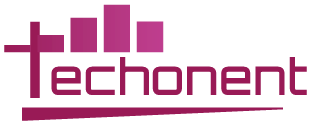
Businesses are often stuck in a difficult position where they follow marketing trends blindly. Whether they have developed a great product or provided excellent service, if their marketing is not targeted to the right audience, everything goes in vain. Thus, to ensure sustainable business growth and target the right audience with optimal strategies, they opt to employ data driven B2B marketing.
The blind marketing industry is expected to grow significantly, with projected growth from $10.6 billion in 2019 to $28.6 billion by 2027, representing a Compound Annual Growth Rate (CAGR) of 13.2% over an 8-year period. This highlights that many businesses are still not practicing data driven and analytical strategies to optimize their marketing efforts. They are more drawn to conventional strategies that rely on the intuition of decision-makers and, more importantly, the outdated approaches used.
Data-Driven B2B Marketing— Using Analytics for Clever Business Decisions
Utilizing analytics, data driven B2B marketing enables businesses to make more informed and intelligent decisions. However, many companies operate without these insights and marketing analytics. Therefore, the blind marketing approach often results in missed opportunities as businesses fail to optimize their strategies based on market data.
Organizations can identify trends using analytics and understand customer behavior. By tailoring their marketing strategies, they are able to cater to individual needs and preferences. This dynamic approach enhances engagement and drives sustainable growth for the business. Data insights ensure that every marketing dollar is spent effectively by encouraging better decision-making and maximizing ROI.
Data Driven B2B Digital Marketing— How it Differs from Traditional Marketing
To understand the fundamental difference between data-driven marketing and other traditional methods, it is optimal to comprehend the differences side by side. Let's demonstrate it in a differential table for better comprehension.
|
Aspect |
Data-Driven Marketing |
Conventional Marketing |
|
Performance Metrics |
Tracks effectiveness with detailed metrics and KPIs |
Limited tracking of performance; uses basic metrics |
|
Customer Insights |
Continuously collects and analyzes customer feedback for insights |
Relies on anecdotal evidence or gut feelings for insights |
|
Campaign Execution |
Implements campaigns using real-time data and predictive models |
Follows fixed schedules with pre-planned ideas |
|
Personalization |
Delivers highly personalized content based on customer behavior |
Personalization is kept to a minimum; standard messaging is utilized. |
|
Data Collection |
Gathers information nonstop from various origins. |
Collects limited or no data systematically |
|
Campaign Planning |
Plans campaigns based on customer behavior analysis and data insights |
Uses creativity, past experiences, or trends to guide campaign
planning |
|
Decision Basis |
Makes decisions based on data analysis and evidence |
Relies on experience, intuition, or assumptions |
|
Cost Efficiency |
Maximizes budget allocation through data-driven insights |
Risk of higher costs due to inefficient spending |
|
Technology Use |
Utilizes advanced technology like AI, machine learning, and analytics |
Limited use of modern technology may depend on traditional methods |
|
Reporting |
Provides detailed, data-driven reports and dashboards for insights |
Basic reporting lacking depth or actionable insights |
|
Targeting |
Targets precisely by using customer data and segmentation |
Uses broad targeting with a one-size-fits-all approach |
|
Long-Term Strategy |
Continuously refines strategies based on data-driven feedback |
Rarely updates strategies; revisions are infrequent and static |

